Did you know that pea eggplant, also known as Thai eggplant or green pea aubergine, is a tropical vegetable with numerous health benefits?
Despite its small size, this edible nightshade, scientifically known as Solanum torvum, packs a nutritional punch. Just one cup of cubed pea eggplant contains approximately 20 calories, 5g of carbohydrates, 2g of fiber, and an array of essential vitamins and minerals, including vitamins A and K, magnesium, potassium, and folate. Notably, it is low in fat, protein, and sodium, making it a healthy addition to your meals.
Key Takeaways:
- Pea eggplant, also known as Thai eggplant or green pea aubergine, is a tropical vegetable.
- It is a small variety of eggplant and belongs to the Solanum torvum species.
- One cup of cubed pea eggplant contains approximately 20 calories, 5g of carbohydrates, and 2g of fiber.
- Pea eggplant is rich in vitamins A and K, magnesium, potassium, and folate.
- It is low in fat, protein, and sodium, making it a healthy addition to your diet.
Nutritional Benefits of Pea Eggplant
Pea eggplant, or Thai eggplant, is not only a flavorful addition to your recipes but also a nutrition powerhouse. This tropical vegetable is rich in essential vitamins, minerals, and antioxidants that contribute to overall health and well-being.
One of the key nutritional benefits of pea eggplant is its high content of vitamins A and K. Vitamin A is crucial for maintaining healthy vision, supporting immune function, and promoting cell growth. Meanwhile, vitamin K plays a vital role in blood clotting, bone health, and heart health.
In addition to vitamins, pea eggplant is a good source of minerals like magnesium and potassium. Magnesium is necessary for muscle function, nerve health, and maintaining healthy blood pressure. Potassium, on the other hand, helps regulate fluid balance in the body, supports muscle contractions, and facilitates kidney function.
Furthermore, pea eggplant is low in calories, making it an excellent choice for individuals looking to manage their weight or maintain a healthy diet. One cup of pea eggplant contains only about 27 calories, allowing you to enjoy its delicious taste without worrying about excessive calorie intake.
Another health benefit of pea eggplant is its dietary fiber content. Fiber is essential for digestion and maintaining bowel regularity. It aids in healthy digestion, prevents constipation, and may contribute to weight management and heart health.
Nutritional Content of Pea Eggplant (per 1 cup)
| Nutrient | Amount |
|---|---|
| Calories | 27 |
| Carbohydrates | 6 grams |
| Dietary Fiber | 3 grams |
| Vitamin A | 590 micrograms |
| Vitamin K | 52 micrograms |
| Magnesium | 26 milligrams |
| Potassium | 343 milligrams |
Adding pea eggplant to your diet is a simple yet effective way to boost your nutrition and enjoy the many health benefits it offers. Whether you incorporate it into curries, stir-fries, or other dishes, this versatile vegetable will not only enhance the flavor of your meals but also contribute to your overall well-being.
Cooking and Preparation Tips for Pea Eggplant
When it comes to cooking and preparing pea eggplant, there are a few tips that can help you make the most of this versatile vegetable. Whether you want to enjoy it baked, grilled, steamed, or sautéed, these tips will ensure delicious results.
Salting: Pea eggplant has a tendency to absorb a lot of oil when cooked. To mitigate this, many cooks recommend salting the eggplant before cooking. Salting helps remove excess moisture and air from the cells, resulting in reduced oil absorption. It also enhances the flavor and reduces the water content in the vegetable. If you choose to salt your pea eggplant, make sure to rinse and pat it dry before using it in your recipe.
Peeling: The decision to peel your pea eggplant depends on the recipe and your personal preference. Young, tender eggplants are preferred for cooking as they have a shorter cooking time and a more tender texture. If you decide to peel the eggplant, use a vegetable peeler or a knife to remove the skin.
Cooking methods: Pea eggplant can be prepared using various cooking methods, depending on the desired result. Baking and grilling are great options for achieving a slightly smoky flavor and a soft, creamy texture. Steaming is a healthy and gentle cooking method that preserves the natural flavors of the vegetable. Sautéing is a quick and convenient method that allows you to control the level of doneness and add complementary ingredients like tomatoes, onions, garlic, and cheese.
Cooking precautions: While pea eggplant is versatile and delicious, it is important to note that it is not suitable for consuming raw. Always cook pea eggplant before enjoying it to ensure it is safe to eat and fully enjoy its flavors.
Experimenting with different cooking techniques and flavor combinations will allow you to discover your favorite way to enjoy pea eggplant. So, have fun in the kitchen and let your culinary creativity shine!
| Cooking Tips for Pea Eggplant |
|---|
| Salting the eggplant before cooking helps reduce oil absorption and enhances flavor. |
| The decision to peel the eggplant depends on the recipe and personal preference. |
| Baking, grilling, steaming, and sautéing are popular cooking methods for pea eggplant. |
| Pea eggplant is not suitable for consuming raw; always cook it before enjoying. |
Home Preservation Techniques for Pea Eggplant
If you have an abundance of pea eggplant and wish to preserve them for later use, there are several home preservation techniques that you can employ. Freezing is one of the best methods for preserving pea eggplant, ensuring that you can enjoy their fresh flavor even when they’re out of season.
To freeze pea eggplant, start by harvesting the eggplants when the seeds are not yet mature and the color is uniformly dark. Next, wash and peel the eggplants if desired. Then, slice them to a thickness of 1/3 inch. This slicing technique will allow the eggplants to freeze evenly and maintain their texture and flavor.
Table: Step-by-step guide for freezing pea eggplant
| Steps | Description |
|---|---|
| 1 | Harvest the eggplants when the seeds are not yet mature and the color is uniformly dark. |
| 2 | Wash and peel the eggplants if desired. |
| 3 | Slice the eggplants to a thickness of 1/3 inch. |
| 4 | Blanch the sliced eggplants in boiling water for 4 minutes, adding lemon juice to prevent discoloration. |
| 5 | Cool and drain the blanched eggplants. |
| 6 | Package the drained eggplant slices, leaving 1/2 inch of headspace. |
| 7 | Seal the packages in airtight freezer bags or containers. |
| 8 | Place the packaged eggplant slices in the freezer. |
Drying and Canning Alternatives
While freezing is the recommended home preservation technique for pea eggplant, it’s worth mentioning that drying and canning are not suitable methods for this particular vegetable. The texture and taste of pea eggplant may not hold up well to drying, and the canning process may alter its flavor and texture significantly.
“Freezing is the best method for preserving the flavor and texture of pea eggplant, allowing you to enjoy this delightful vegetable long after the harvest season has ended.”
By following the steps outlined above, you can successfully freeze pea eggplant and extend its shelf life. Whether you want to enjoy pea eggplant in a vibrant Thai curry or add it to a delicious stir-fry, having a stock of frozen pea eggplant ensures that you can savor this tropical delight throughout the year.
The Versatility of Pea Eggplant in Thai Cuisine
Pea eggplant, known as “Makhuea phuang” in Thai cuisine, is a flavorful and versatile ingredient that is frequently used in traditional Thai dishes. This small, green pea-sized berry adds a burst of flavor and texture to curries and stir-fries.
In Thai green curry, pea eggplant is added uncooked, allowing its unique taste to infuse the dish with depth and complement the other ingredients. The mildly bitter flavor of the pea eggplant berries, attributed to the brown seeds within them, adds complexity to the overall taste profile.
Thai chili paste, another staple in Thai cuisine, often features pea eggplant as one of its key components. These berries contribute to the spicy and aromatic flavors of the paste, enhancing the overall taste experience.
The versatility of pea eggplant makes it a preferred choice for Thai chefs, as it can be used in various cooking methods and pairs well with a range of spices and ingredients. Its ability to absorb and enhance flavors makes it an essential ingredient for creating authentic Thai dishes.
| Thai Dishes | Pea Eggplant Usage |
|---|---|
| Thai Green Curry | Uncooked pea eggplant berries add flavor and texture |
| Thai Chili Paste | Pea eggplant enhances the spicy and aromatic profile |
| Stir-Fries | Pea eggplant adds a burst of flavor and complements other ingredients |
| Curries | Pea eggplant contributes to the overall taste complexity |
With its distinct flavor and ability to elevate the taste of Thai dishes, pea eggplant continues to be celebrated in Thai cuisine and is a favorite among both locals and food enthusiasts around the world.
The History and Cultural Significance of Pea Eggplant
Pea eggplant holds a captivating history and tremendous cultural significance, particularly in the realm of Thai cuisine. Believed to have originated in Central America, this vibrant tropical vegetable has traversed borders and influenced various global culinary traditions. Thai cuisine, in particular, has embraced pea eggplant as an essential ingredient, showcasing its exceptional taste and versatility. Additionally, pea eggplant has found its way into Jamaican dishes, and intriguingly, there are even whispers of its use in Haitian voodoo rituals. The widespread use of pea eggplant across different cultures serves as a testament to its captivating cultural and culinary importance.
The Versatility of Pea Eggplant in Thai Cuisine
In Thai cuisine, pea eggplant, known as “Makhuea phuang,” takes center stage in numerous traditional dishes. Whether it’s a vibrant Thai green curry or a fiery Thai chili paste, pea eggplant brings its unique flavor and texture to the table. The small, green pea-sized berries, with their slightly bitter taste due to the brown seeds contained within, add depth and complexity to Thai dishes. Unlike other varieties of eggplant, pea eggplant is typically added uncooked to Thai green curry, showcasing its distinctive flavor profile. With such versatility, pea eggplant transforms Thai dishes into culinary masterpieces.
Cultural and Culinary Significance
The history and cultural significance of pea eggplant extend beyond its role in Thai cuisine. This tropical vegetable’s journey across borders and its integration into diverse culinary practices speaks volumes about its cultural impact. Pea eggplant represents the fusion of flavors and the celebration of culinary diversity. Its ability to enhance dishes with its distinct taste and texture transcends borders and brings people together through shared culinary experiences. The cultural and culinary significance of pea eggplant shines bright, captivating taste buds and connecting cultures.
| Country/Cuisine | Pea Eggplant Usage |
|---|---|
| Thailand | Integral ingredient in traditional dishes |
| Jamaica | Incorporated into various Jamaican dishes |
| Haiti | Reputed use in Haitian voodoo rituals |
| Global | Showcased as a vibrant culinary symbol of cultural diversity |
Exploring Different Varieties of Eggplant
Eggplant, including pea eggplant, comes in various shapes and sizes, offering a wide range of flavors and textures. Let’s take a closer look at some popular eggplant varieties:
Spongy Eggplant
The spongy eggplant, often referred to as “emoji-style” eggplant, is a Dutch variety that is widely common. It has a unique spongy texture, low in kilojoules, and is a rich source of fiber, potassium, manganese, and anthocyanin antioxidants. Its versatility makes it a staple in various cuisines.
Japanese Eggplant
Japanese eggplants are longer and more slender than the traditional eggplant. They have a tender skin, less bitterness, and a sweet flavor. Japanese eggplants are ideal for slow-roasting or using in stir-fries.
Chinese Eggplant
Chinese eggplants are similar to Japanese eggplants in shape but slightly thicker. They have a mild and slightly sweet taste. Chinese eggplants are commonly used in Asian cuisines and can be stir-fried, roasted, or braised.
Round Eggplant
The round eggplant, primarily grown in Italy, comes in various varieties such as Natoora Italian or Rosa Bianca. It has a mild and sweet flavor, making it perfect for grilling or roasting. Round eggplants have a visually appealing shape and can be a standout addition to any dish.
These are just a few examples of the diverse eggplant varieties available. Each variety brings its own unique flavors and textures to the table, allowing for endless culinary creativity.
Tips for Enhancing the Flavor of Eggplant
Eggplant can sometimes be perceived as tasteless or lacking flavor, but with a few cooking hacks, its flavor can be enhanced. One important tip is to season the eggplant heavily as it has a sponge-like quality that allows it to absorb flavors. Adding salt, herbs, spices, and other seasonings can make a significant difference in the taste of your dish.
Another tip is to add some texture to the eggplant by incorporating ingredients like nuts, crispy garlic, or shallots. This adds a crunchy element and provides contrast to the softness of the eggplant.
“The secret to making eggplant taste delicious is to season it well and layer flavors. Don’t be afraid to experiment with herbs, spices, and different seasonings. The more you add, the more flavorful your eggplant dish will be.” – Chef Julia Smith
Additionally, charring the outsides of the eggplant imparts a smoky flavor. Whether you cook the eggplant over a flame, on a grill, or under a broiler, charring enhances its taste and adds depth to your dishes.
Here are some tips and techniques to enhance the flavor of your eggplant dishes:
- Season the eggplant with salt, herbs, spices, and other seasonings before cooking.
- Add texture to the eggplant by incorporating ingredients like nuts, crispy garlic, or shallots.
- Char the outsides of the eggplant for a smoky flavor.
- Experiment with different cooking methods such as grilling, roasting, or broiling to bring out the best flavors in eggplant.
By following these tips, you can transform eggplant into a flavorful and delicious ingredient that will elevate your dishes to the next level.
Pro Tip: Seasoning Ideas for Eggplant
If you’re looking for some inspiration on how to season your eggplant, here are a few ideas:
- Italian-style: Season with garlic, oregano, basil, and a sprinkle of parmesan cheese.
- Middle Eastern-inspired: Try a blend of cumin, coriander, paprika, and a touch of cinnamon.
- Asian-inspired: Use soy sauce, ginger, garlic, and a dash of sesame oil for an umami-packed flavor.
Remember, the key is to experiment and find your own favorite combination of seasonings. With a little bit of creativity and some flavorful ingredients, you can turn eggplant into a star ingredient in your kitchen.
| Method | Benefits |
|---|---|
| Seasoning | Enhances the taste of the eggplant, making it more flavorful. |
| Adding Texture | Creates a pleasing contrast between the softness of the eggplant and the crispy ingredients. |
| Charring | Imparts a smoky flavor to the eggplant, adding depth to your dishes. |
Other Overlooked Vegetables Worth Trying
In addition to pea eggplant, there are several other vegetables that are often overlooked but are worth trying. These vegetables offer unique flavors and versatile uses in the kitchen. Let’s explore three of them:
Kohlrabi
Kohlrabi is an underrated vegetable with a nutty and creamy flavor reminiscent of Jerusalem artichoke. It has a crisp texture and can be enjoyed raw or cooked. To bring out its delicious taste, kohlrabi can be slow-cooked in the oven or added to soups and stews. It can also be shredded and used in slaws or roasted for a delectable side dish.
Leeks
Leeks are another vegetable that often goes unnoticed, but they offer a natural sweetness and a milder flavor compared to onions. They can be pickled, fermented, or used as a flavorful base for stocks and sauces. Grilling leeks brings out their delicate smoky flavor and adds a unique twist to salads and side dishes. Including leeks in your recipes will elevate the taste and provide a refreshing change.
Cauliflower
Cauliflower is a versatile vegetable with meat-like qualities that can be used in a variety of ways. It can be grilled to perfection, enhancing its natural sweetness and adding a smoky flavor. Cauliflower’s texture makes it an excellent substitute for meat in dishes like fritters or vegetarian burgers. For a crispy and golden brown delight, try frying cauliflower florets. With its versatility and mild taste, cauliflower is a vegetable that deserves more attention in the kitchen.
Exploring these overlooked vegetables not only expands your culinary repertoire but also introduces new flavors and textures to your dishes. Don’t be afraid to experiment with these underrated gems and discover the wonders they bring to your meals.
Four Delicious Recipes Using Pea Eggplant
Pea eggplant is a versatile vegetable that can be the star ingredient in a variety of delicious recipes. Its unique flavor and texture make it a great addition to various dishes. Let’s explore four mouthwatering recipes that showcase the versatility of pea eggplant:
| Recipe | Description |
|---|---|
| Baba Ghanoush | A Middle Eastern dip made with roasted eggplant, tahini, garlic, lemon juice, and olive oil. This creamy and flavorful spread is perfect for serving with pita bread or as a dip for raw vegetables. |
| Burned Eggplant Soup | A smoky and hearty soup made with charred eggplant, tomatoes, onions, and aromatic spices. This soup is warm, comforting, and packed with flavors that will satisfy your taste buds. |
| Red Capsicum and Eggplant Burger | A vegetarian burger patty made with roasted red capsicum, eggplant, breadcrumbs, and spices. This burger is not only delicious but also a healthy alternative to meat burgers. |
| Smoky Eggplant and Shallot Salad | A refreshing salad made with grilled eggplant, shallots, cherry tomatoes, fresh herbs, and a tangy vinaigrette. This salad is full of vibrant colors and flavors, making it a perfect side dish for any meal. |
These recipes highlight the unique taste and texture of pea eggplant while incorporating complementary ingredients to create mouthwatering dishes. Whether you’re a fan of dips, soups, burgers, or salads, there’s a recipe here that will satisfy your cravings. So, grab some pea eggplant and get ready to enjoy these delicious culinary creations!
Conclusion
Pea eggplant is not just an ordinary vegetable—it is a powerhouse of nutrition and a culinary gem. With its low-calorie content and high nutritional value, pea eggplant offers numerous health benefits. Rich in vitamins A and K, minerals like magnesium and potassium, and dietary fiber, this versatile vegetable supports vision, boosts immune function, and helps maintain healthy blood pressure.
When it comes to cooking and preparing pea eggplant, there are various techniques you can employ to enhance its flavor. From salting and charring to adding your favorite seasonings, there are endless possibilities to make your pea eggplant dishes truly exceptional. Whether you’re indulging in traditional Thai dishes, nourishing soups, flavorful burgers, or refreshing salads, pea eggplant brings a unique taste and texture to every culinary creation.
Don’t overlook pea eggplant the next time you find it at your local market or grocery store. Its versatility in the kitchen and health benefits make it a worthy addition to any meal. So, roll up your sleeves, get creative with recipes, and unlock the wonders of this tropical vegetable. Discover the delight of pea eggplant and elevate your cooking to a whole new level.

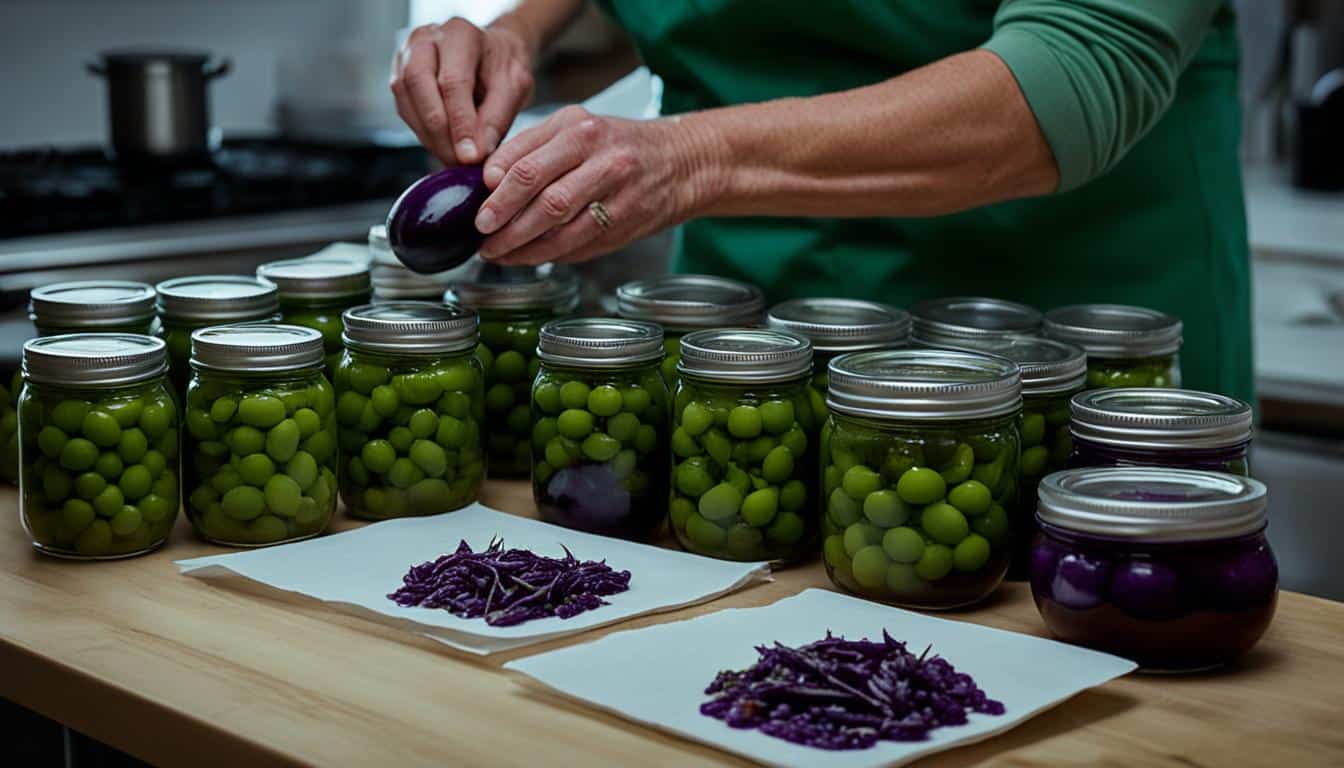
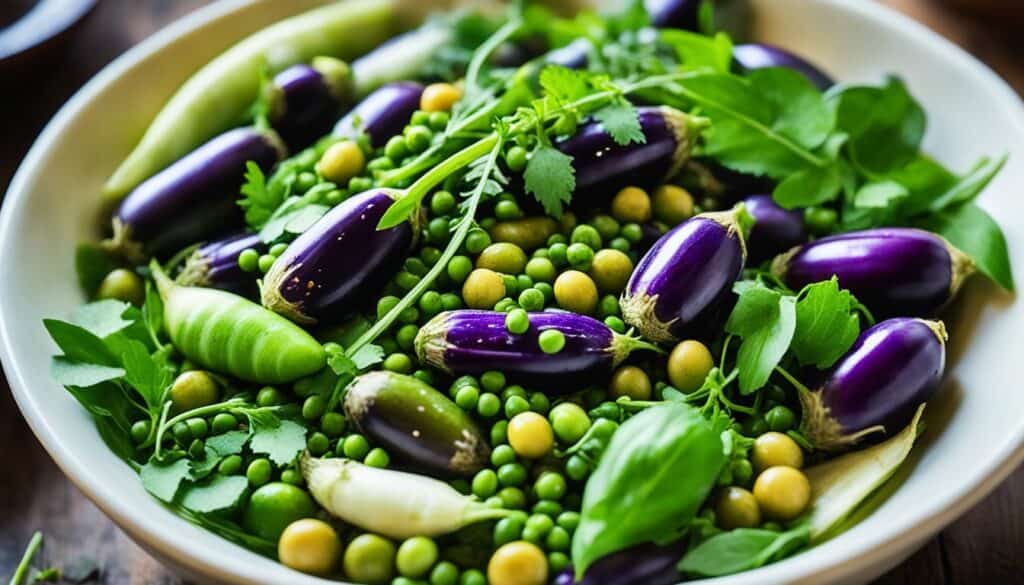

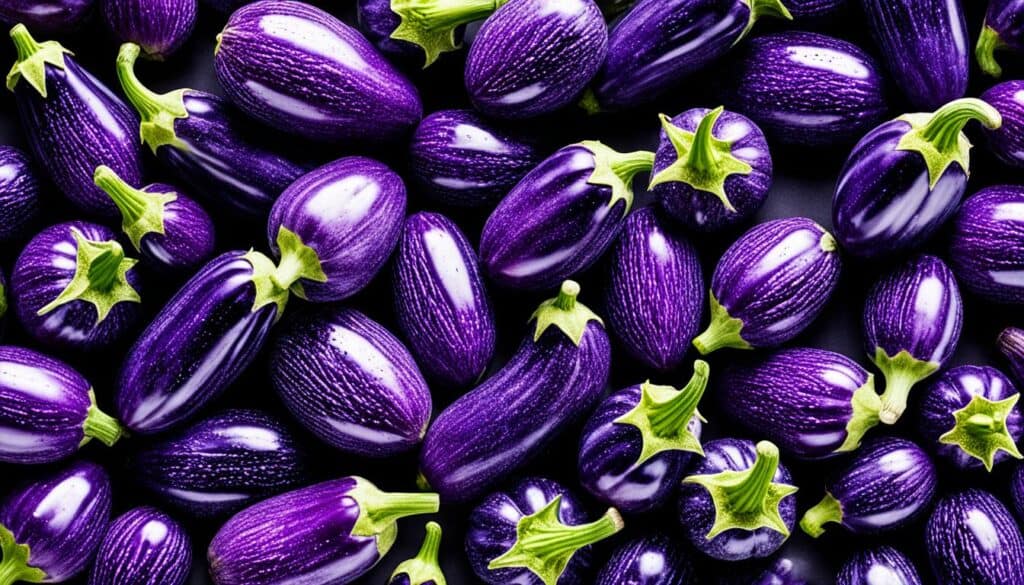
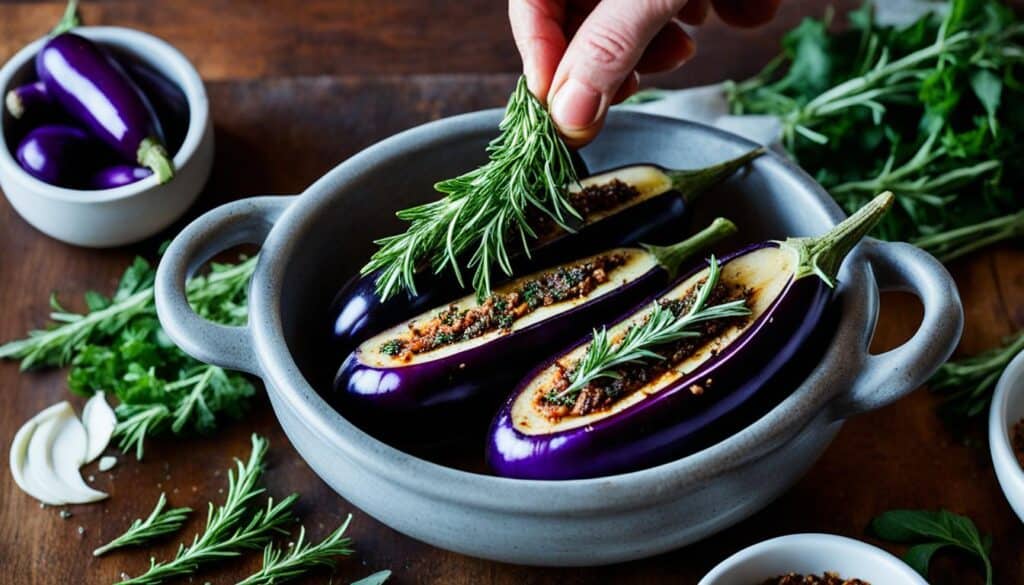
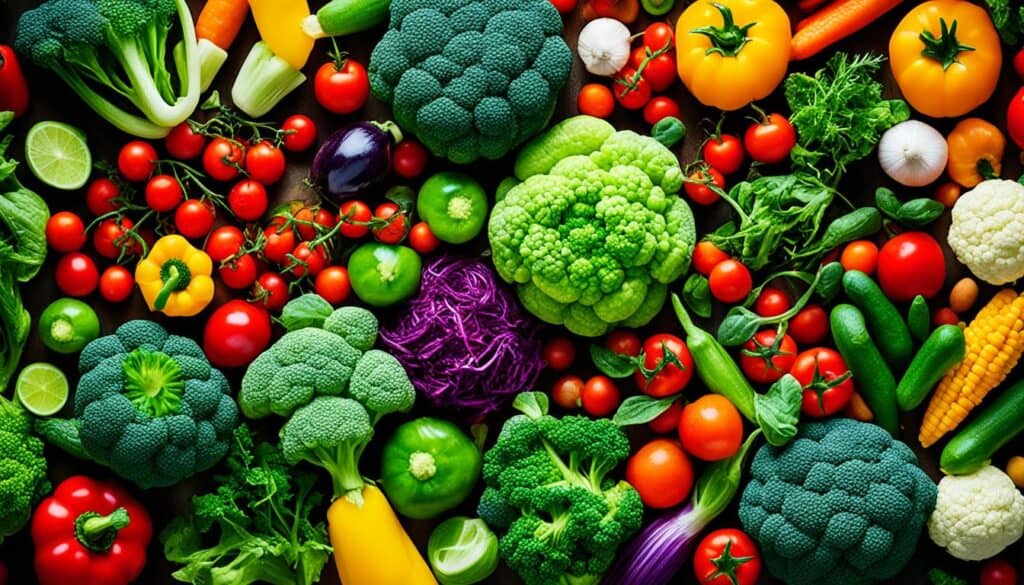

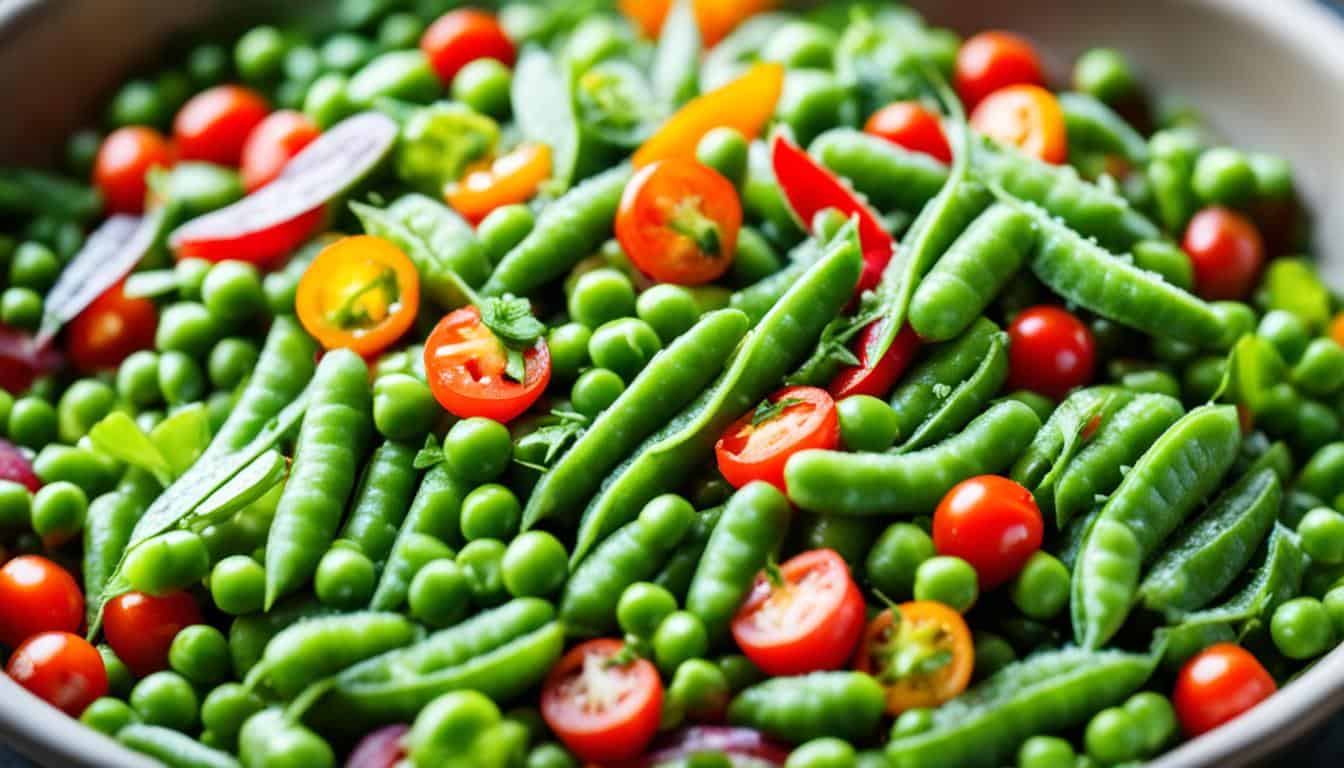
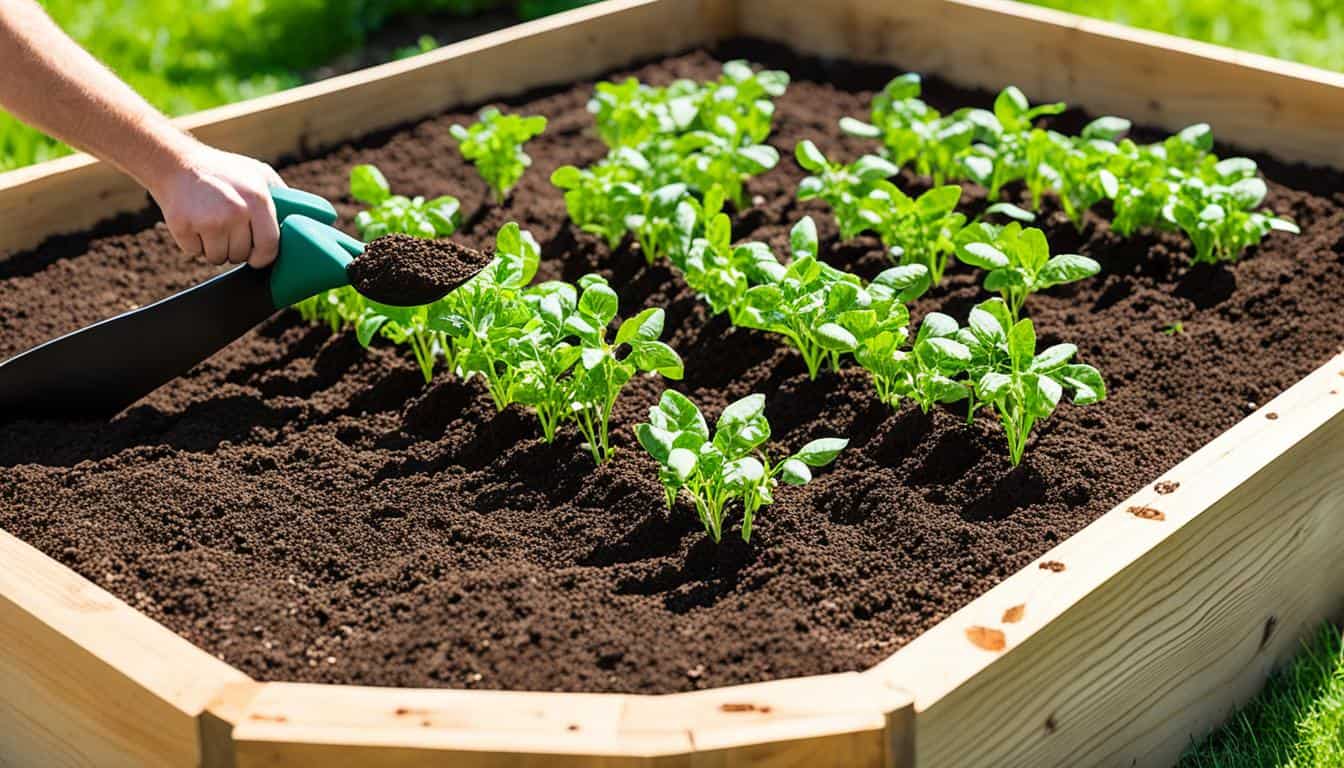
Leave a Reply